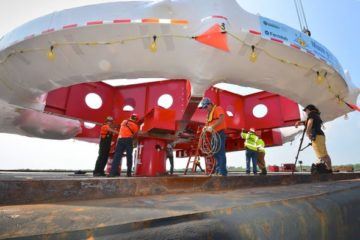Sabine Hossenfelder in Scientific American:
 So how are we to gauge the 4.2-sigma discrepancy between the Standard Model’s prediction and the new measurement? First of all, it is helpful to remember the reason that particle physicists use the five-sigma standard to begin with. The reason is not so much that particle physics is somehow intrinsically more precise than other areas of science or that particle physicists are so much better at doing experiments. It’s primarily that particle physicists have a lot of data. And the more data you have, the more likely you are to find random fluctuations that coincidentally look like a signal. Particle physicists began to commonly use the five-sigma criterion in the mid-1990s to save themselves from the embarrassment of having too many “discoveries” that later turn out to be mere statistical fluctuations.
So how are we to gauge the 4.2-sigma discrepancy between the Standard Model’s prediction and the new measurement? First of all, it is helpful to remember the reason that particle physicists use the five-sigma standard to begin with. The reason is not so much that particle physics is somehow intrinsically more precise than other areas of science or that particle physicists are so much better at doing experiments. It’s primarily that particle physicists have a lot of data. And the more data you have, the more likely you are to find random fluctuations that coincidentally look like a signal. Particle physicists began to commonly use the five-sigma criterion in the mid-1990s to save themselves from the embarrassment of having too many “discoveries” that later turn out to be mere statistical fluctuations.
But of course five sigma is an entirely arbitrary cut, and particle physicists also discuss anomalies well below that limit. Indeed, quite a few three- and four-sigma anomalies have come and gone over the years.
More here. [Thanks to Bill Benzon.]
